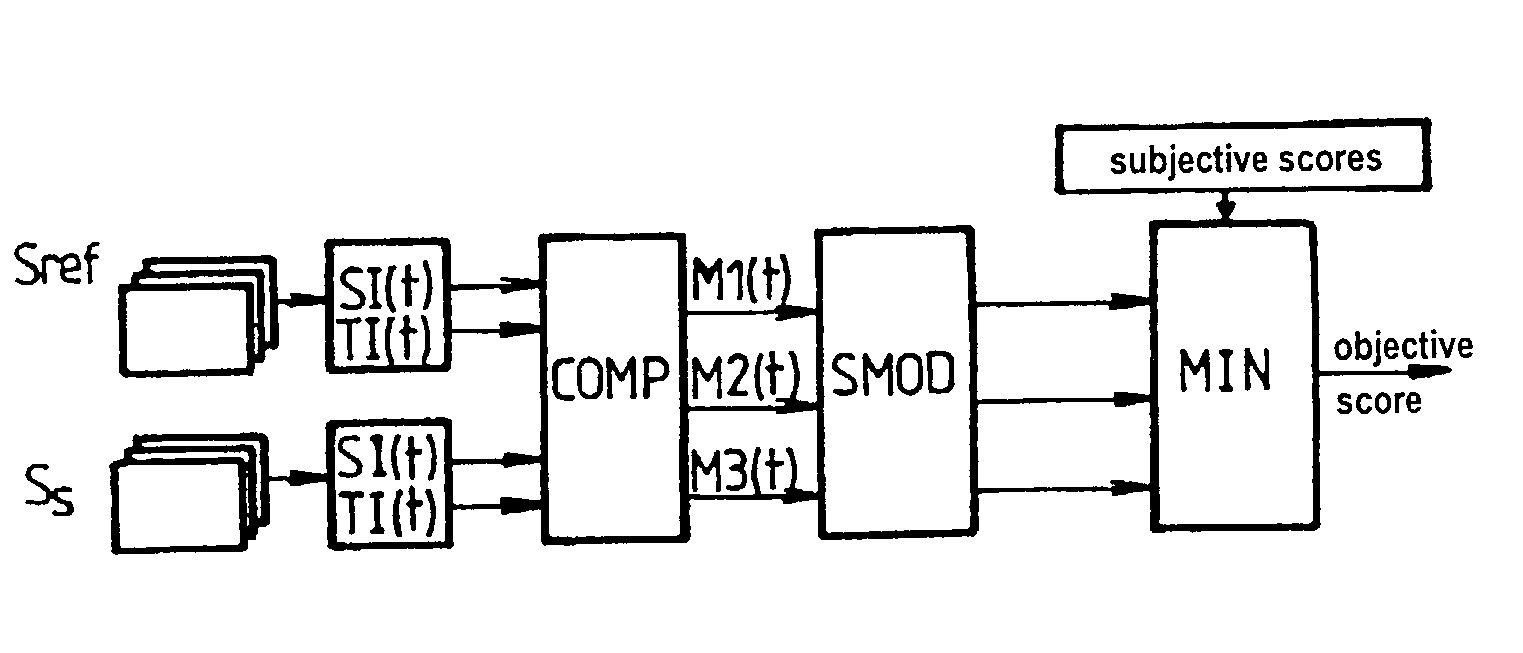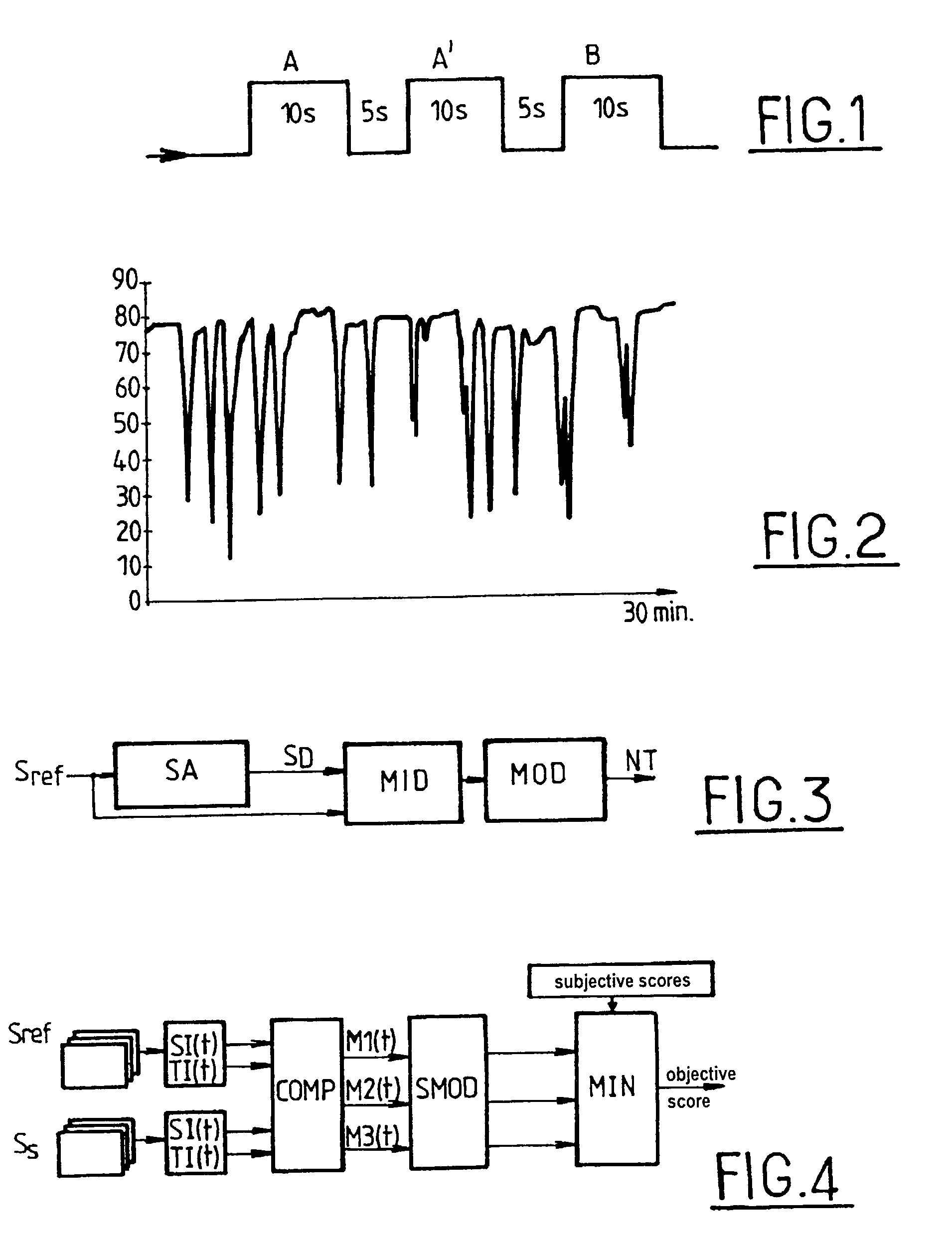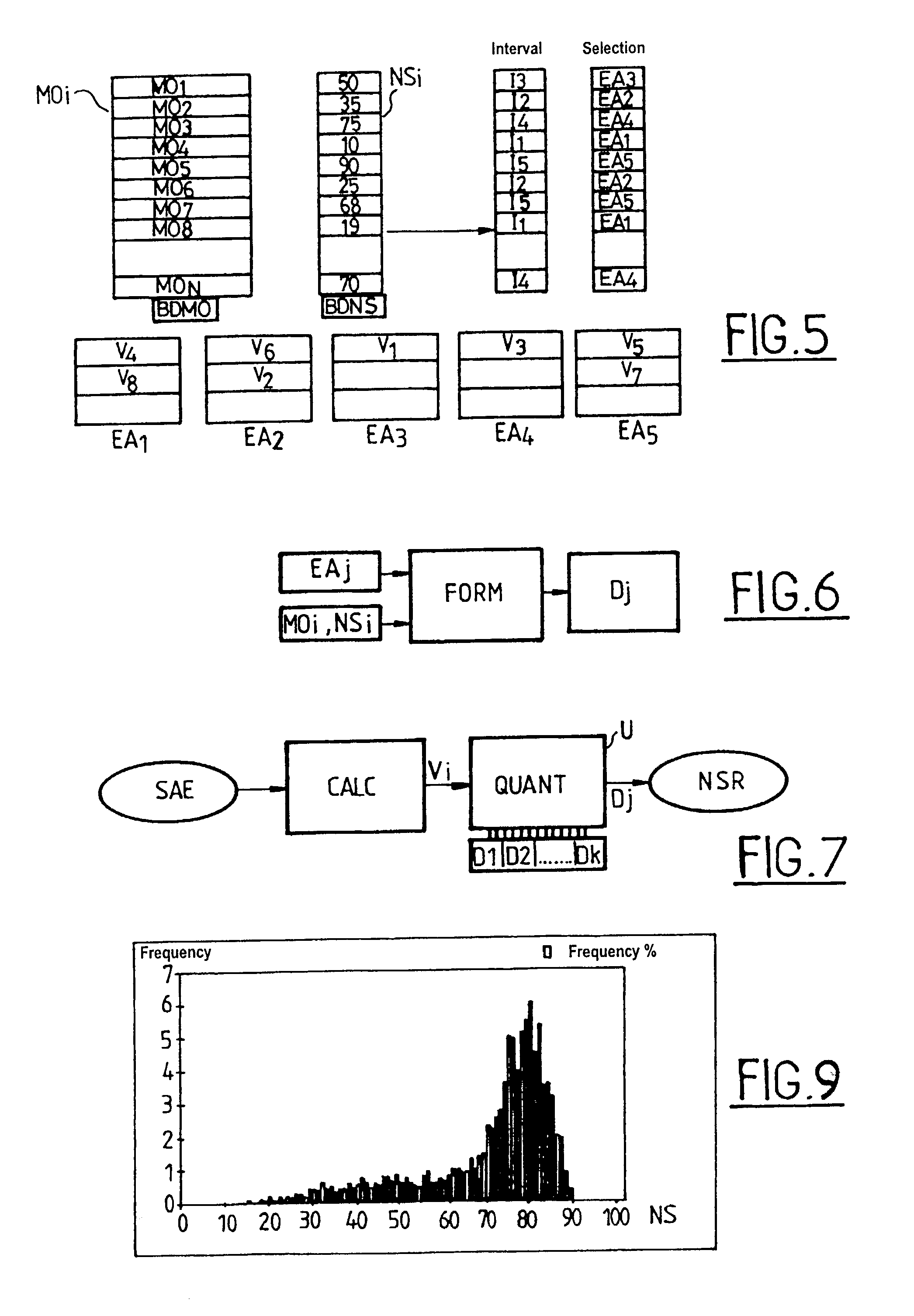Method of evaluating the quality of audio-visual sequences
a technology of audio-visual sequences and quality evaluation, applied in error detection/prevention using signal quality detectors, instruments, television systems, etc., can solve the problems of unsuitable remote surveillance of distribution networks, unsuitable laboratory tests, and low bit ra
- Summary
- Abstract
- Description
- Claims
- Application Information
AI Technical Summary
Benefits of technology
Problems solved by technology
Method used
Image
Examples
Embodiment Construction
[0072]The invention is presented as an objective method of evaluating the quality of audio and video signals based on a set of parameters.
[0073]The method does not require new parameters to be defined. It is based on the idea of proposing a general model based on vector quantification to make use of the measurements. It is a training approach making it possible to give objective quality scores to audiovisual signals. This evaluation is performed in a manner which is correlated with subjective scoring with the help of an objective perception model. To do this, the model operates in two stages.
[0074]The first stage is performed on a set of training audiovisual sequences. The model establishes correspondence between two databases derived from the same audiovisual signals:
[0075]a subjective score database (BDSN); and
[0076]a database of objective measurements taken from the audio and video signals (BDMO);
in order to associate a subjective score with a set of degradation indicators (formi...
PUM
 Login to View More
Login to View More Abstract
Description
Claims
Application Information
 Login to View More
Login to View More - R&D
- Intellectual Property
- Life Sciences
- Materials
- Tech Scout
- Unparalleled Data Quality
- Higher Quality Content
- 60% Fewer Hallucinations
Browse by: Latest US Patents, China's latest patents, Technical Efficacy Thesaurus, Application Domain, Technology Topic, Popular Technical Reports.
© 2025 PatSnap. All rights reserved.Legal|Privacy policy|Modern Slavery Act Transparency Statement|Sitemap|About US| Contact US: help@patsnap.com



